This article was published in July 2020. The COVID-19 (coronavirus) situation is fluid and travel restrictions may change frequently. Contact a travel advisor for the latest information before you decide to fly during COVID-19. (Also see our article: Questions to ask yourself before traveling during COVID-19.)
We recently flew on a domestic United Airlines flight in the United States. Flying is quite different right now than what you may be used to. If you want or need to travel, read on to understand what it is like to fly during COVID-19 (domestically in the USA).
Before the flight
Our flight was nearly full with only a handful of empty seats. We flew on a regional jet with 2-2 seating. There were no middle seats to block but thankfully we were traveling as a couple so this was not an issue for us. However, we did receive notification about the capacity of the flight and given an option to change flights without a fee. If you consider this option to change flights at the last minute, bear in mind that you are not assured of the number of travelers on an alternate flight.
We each wore a mask for the entire journey, from when we left our house to when we arrived at our destination airport. We also had plenty of disinfecting wipes, hand sanitizer, and disposable gloves. When we arrived at the airport we walked straight to security. There were a few people lined up at the check-in desk but it was not busy. We always have carry-on and decided to use the boarding passes on our phone to minimize contact with people.
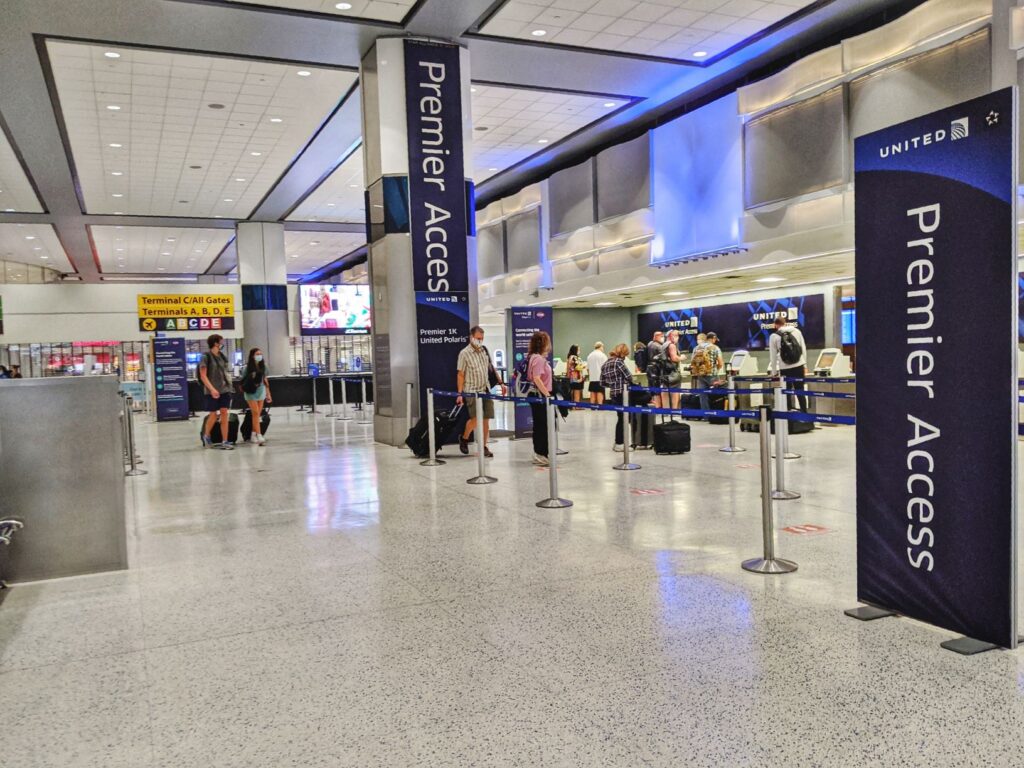
Security (TSA)
TSA Precheck or CLEAR would not provide any benefit given the short lines we encountered. Before we entered the security area we were handed a yellow card. On one side it had the letters CES and on the other side it had a note about not removing shoes and light jacket but to remove large electronics and liquids. It looked like the card had been handled multiple times. Personally, I don’t think handing these out is a good idea given we are supposed to be minimizing contact with other people. I highly recommend wearing gloves during the security check and then either replacing them or washing your hands afterward. All the TSA agents were wearing masks and gloves.
There was no line at security and we walked straight up to the TSA agent but there were signs to stay 6 feet apart if you had to line up. A clear plastic screen (with a small hole at the bottom) separated us and the agent. Since we had our boarding passes on our phone we had to reach through the little hole to scan our passes. I recommend having your boarding passes on your phone as it minimizes your contact with the agent. He did take our IDs to scan. We also had to briefly remove our masks so he could match our IDs but it felt safe as we were on either side of the plastic screen.
At the x-ray machines, we only had to remove our laptops and tablets but not our liquids. The TSA agent was handing out the trays and was the only person touching the trays for our electronics. The full-body image scanners were not operational at this time so we just walked through the metal detector.
As a side note, I did observe that when our bags came out of the x-ray machine a TSA agent did touch every bag to push it along the conveyor belt. She was wearing gloves to protect herself but was not protecting us from transfer between bags.
Gate boarding area
Once through security, the airport was fairly empty with many shops and restaurants closed in terminal C. I recommend bringing your own snacks. We observed no bars open. There are a few places to get food and drinks but no full-service restaurants were open.
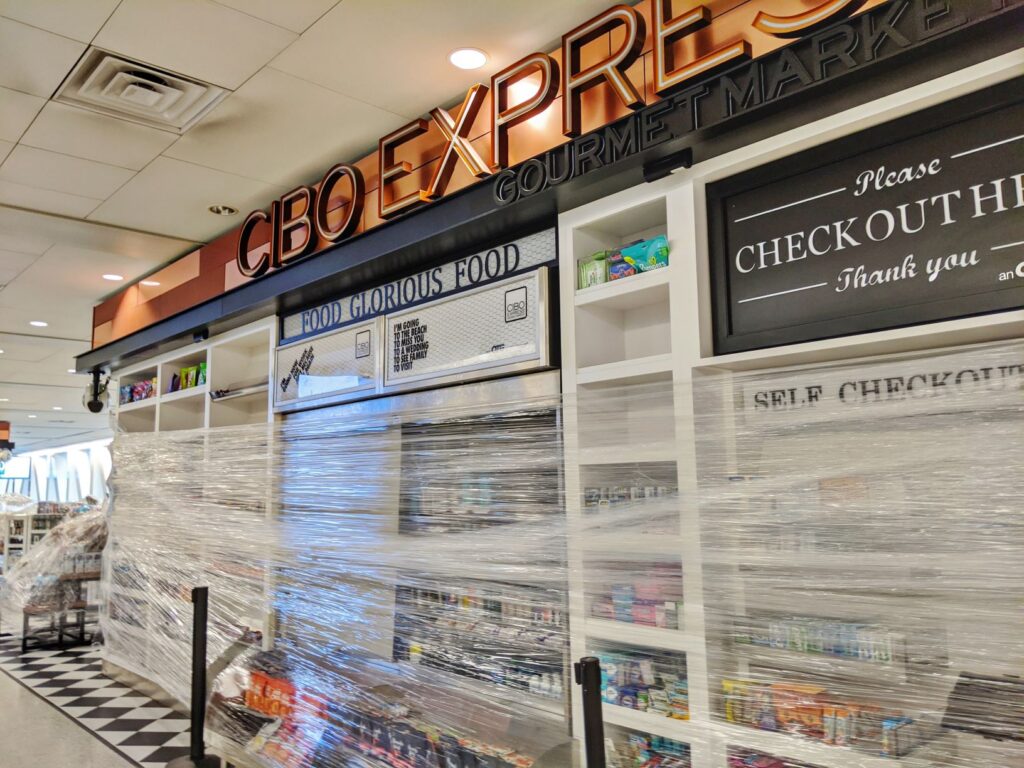

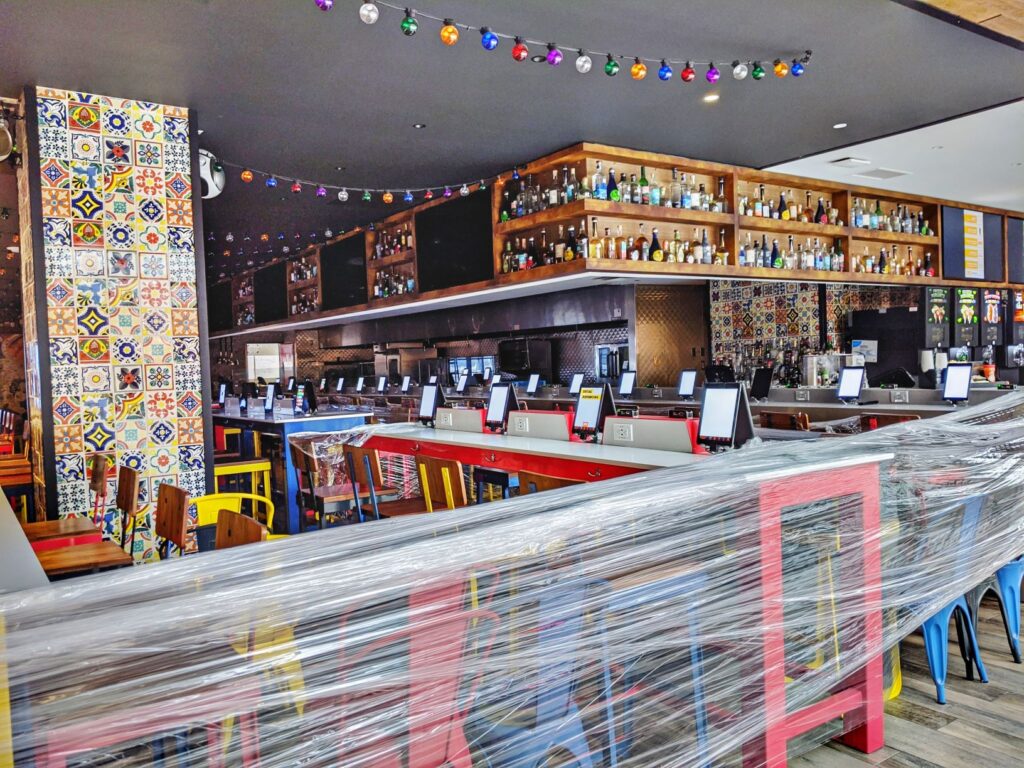
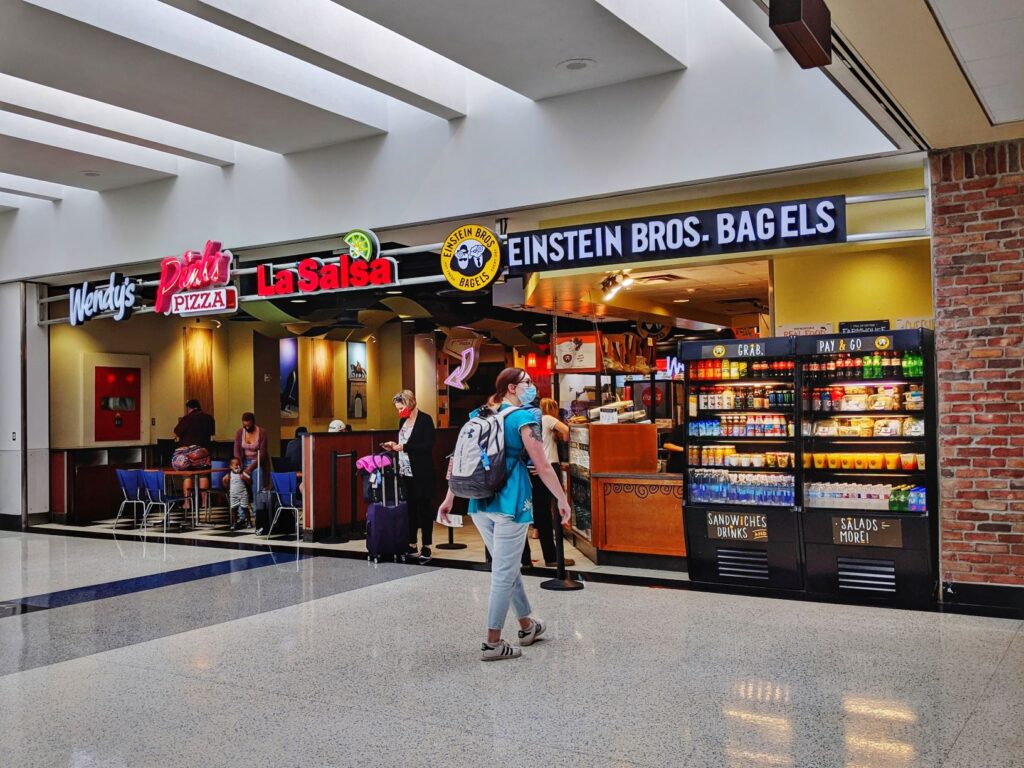
Since we were early we went to the Priority Pass lounge but it was closed. So, we wandered back to our boarding area. There were plenty of empty seats and everyone was keeping apart. I did read that some airports were blocking off every other seat but this was not the case at Bush Intercontinental Airport.

Boarding
Boarding was straight-forward. The pre-boarding process occurred first as usual (families, military, first-class, and upper tier elite frequent flyers). Then they made an announcement to ignore the group assignment and that we would be boarding from the back of the plane to the front to minimize contact. Given the pre-boarding exceptions, we still walked passed people to get to our seats. The plane did smell strongly of cleaning solution when we boarded. We were given a cleaning wipe when we walked on so we could wipe down our seat area. We wiped the high-touch areas like the seatbelt, tray table, armrests, and air vent. They also made an announcement describing the cleaning processes that they are doing for each flight.
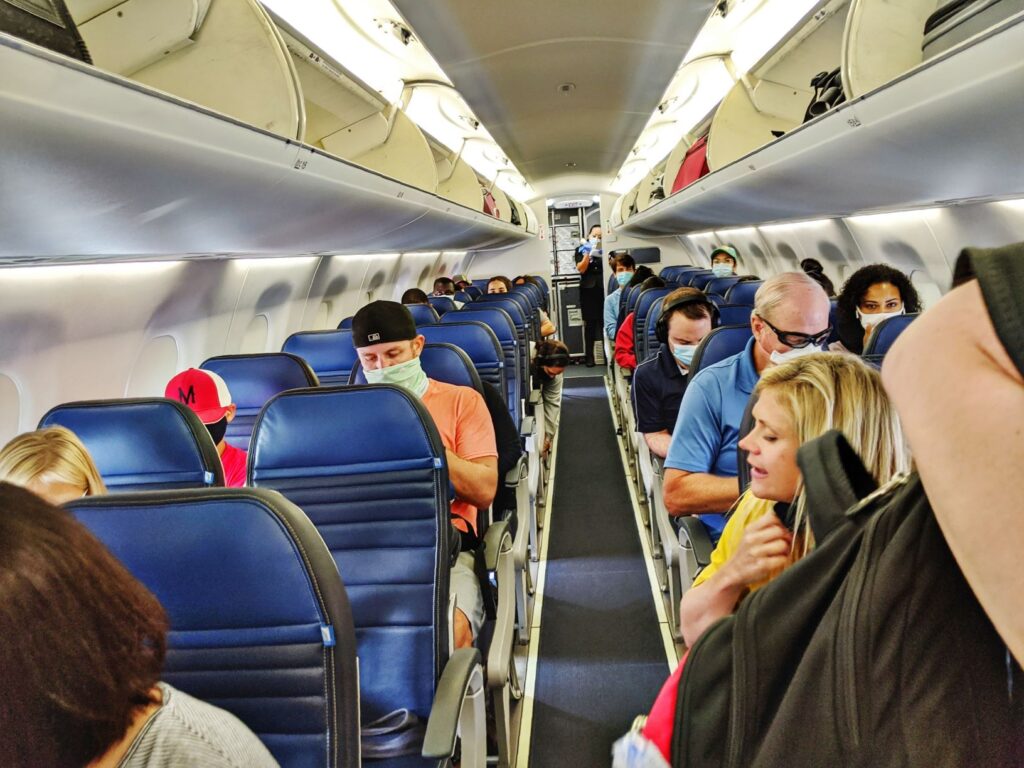
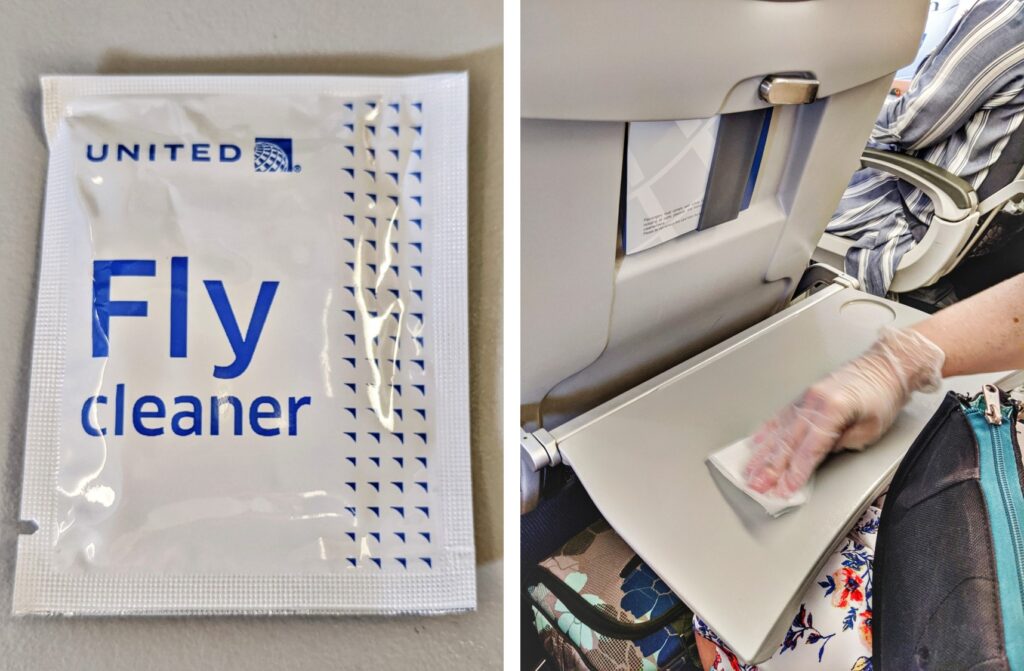
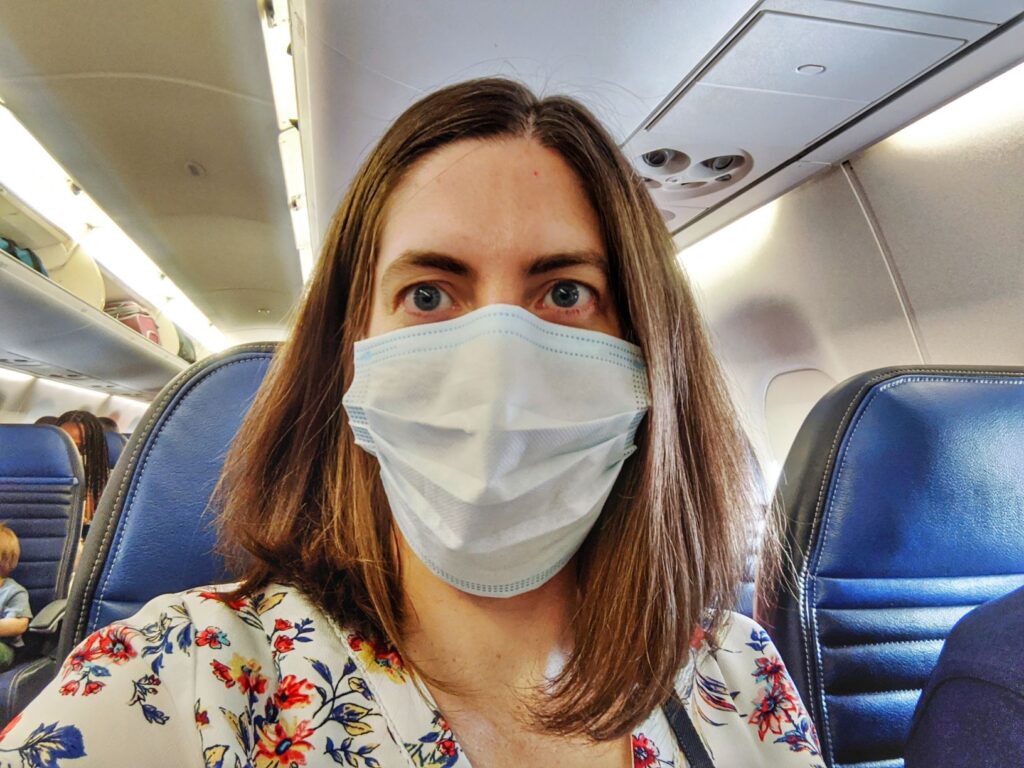
During the flight
The flight was fairly normal. The only differences are that you have to wear a mask the entire time unless you are eating or drinking and there was no food or drink service. We did get a snack bag that contained an alcohol wipe, pretzels, stroopwafel, and a little bottle of water. To be honest, I prefer this to the normal economy service as it was quicker.
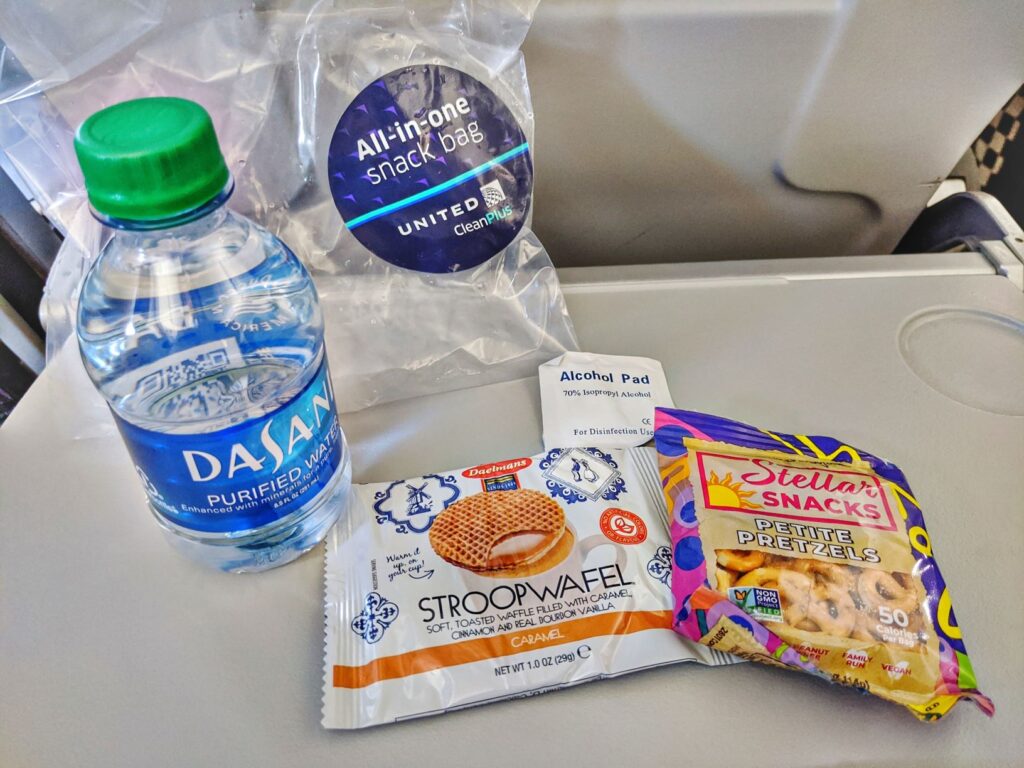
Deplaning
Once we landed, deplaning was a relaxed process. We were told that we would disembark in rows of four at a time starting at the front. I preferred this too as no one was jumping up and bumping into you as they try to retrieve their bags. Our destination airport was even more empty than the airport in Houston.
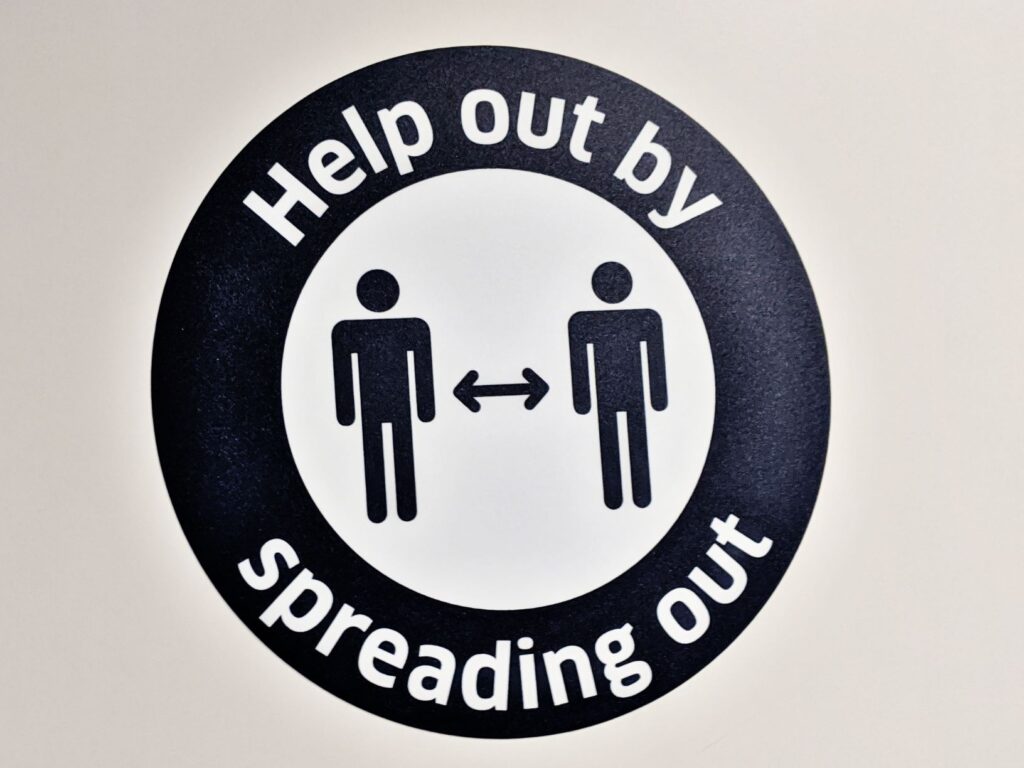
We hope this helps you understand what is it like to fly during COVID-19. Please contact us if you have any questions about making travel arrangements during this time.
